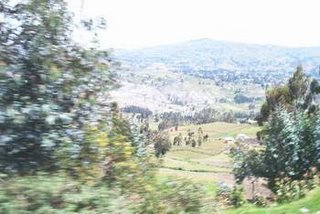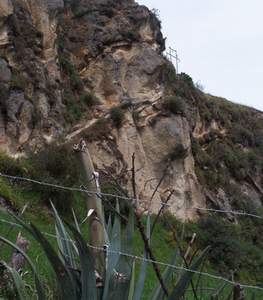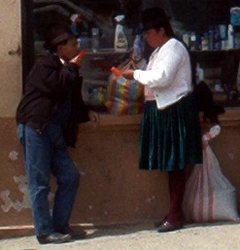Blogroll
- Meals I Have Eaten
- Jess's New Blog
- One of Jess's Old Blogs
- The Stop Button
- Jenerator's Rant
- The Rejection Collection
- Pockets Stuffed With Notes
- The Silkie Road
- PostSecret
- Informed Comment
- Talking Points Memo
- Spoken & Heard
- Ever So Strange
- that-unsound
- Marvelous Prompts (& Responses)
- Only Words To Play
- So Misunderstood
- Acknowledge & Proceed
Profile & Email
Previous Posts
- some fiction
- the assignment
- a note on pictures
- why I love my students
- voting
- Q: What is the worst that can happen?
- the Leche Wars
- Tomas-Who-Has-A-Crush
- the poem I liked
- teaching is for suckers
Archives
- April 2005
- May 2005
- June 2005
- July 2005
- August 2005
- September 2005
- October 2005
- November 2005
- December 2005
- January 2006
- February 2006
- March 2006
- April 2006
- May 2006
- June 2006
- July 2006
- August 2006
- September 2006
- October 2006
- November 2006
- December 2006
- January 2007
- February 2007
- March 2007
- April 2007
- May 2007
- June 2007
- July 2007
- August 2007
- September 2007
- October 2007
- November 2007
- December 2007
- January 2008
- February 2008
- March 2008
- April 2008
- May 2008
- June 2008
- July 2008
- August 2008
- September 2008
- October 2008
- November 2008
- December 2008
- January 2009
- February 2009
- March 2009
- April 2009
- May 2009
- June 2009
- July 2009
- August 2009
- September 2009
- October 2009
- November 2009
- December 2009
- January 2010
- February 2010
- March 2010
- April 2010
- May 2010
- June 2010
- July 2010
- August 2010
- September 2010
- October 2010
- November 2010
- December 2010
- January 2011
- February 2011
- March 2011
- April 2011
- May 2011
- June 2011
- July 2011
- August 2011
- September 2011
- October 2011
- November 2011
- December 2011
- January 2012
- February 2012
- March 2012
- April 2012
- May 2012
- June 2012
- July 2012
- August 2012
- September 2012
- October 2012
- November 2012
- January 2013
- March 2013
- May 2014
n. infantile pattern of suckle-swallow movement in which the tongue is placed between incisor teeth or between alveolar ridges during initial stage of swallowing (if persistent can lead to various dental abnormalities) v. [content removed due to Bush campaign to clean up the internet] n. act of nyah-nyah v. pursuing with relentless abandon the need to masticate and thrust the world into every bodily incarnation in order to transform it, via the act of salivation, into nutritive agency
Wednesday, May 25, 2005
to the mountains...
 Guinea pigs roll on spits, their crusts brown and spiced.
Guinea pigs roll on spits, their crusts brown and spiced. A girl I met in Cuenca pointed out that the locals do not remove the skin from the rodents (no drying pig pelts stretched on racks in the backyard to be made into something Novel and sold in the local market), and wondered how the hair was removed. I suggested that perhaps right after their little necks were slit, the locals take a buzz razor and run it up and down the pig backsides. Guinea pig buzz cut: I’m sure my childhood pet—Mr. Rusty Curly Cubes Pig—was rolling (and reeeeeping) in his grave as I walked along the market, wondering what-the-hell-rodent with big front teeth was being roasted. And when I looked into the hand-braided basket sitting in the center of the outdoor market, I’m sure that my comment was "ahhhhh, cute" rather than "mmmmmm" at all the little cuddling creatures. Apparently, they're supposed to be a delicacy.
I put on socks for the first time in a month. I also donned a light jacket and jeans. It's not that it was cold; during the day, it was warm—t-shirt weather—but with a curl of breeze coming along. I was surprisingly happy to be out of fust and sweat county where I have to wipe my chin every twenty minutes to ensure that zits don’t sprout like little water-induced volcanoes.
 Here’s the journey: Guayaquil lies along the coast, centered in the mire of humid-inducing rivers with floating veggies and small fishing crafts, like canoes with sails. Cuenca is to the southeast of Guayas, and involves a trip past mangrove preserves (invisible behind flat farms of bananas with plastic baggies wrapped around cones) and suddenly, incredibly suddenly—like the difference between 180°-flatline and 70°-degree sloping—a mountain sprouts out of the earth. Not a hill, but a mountain, with the base covered with deciduous alders and bushes and trees I don’t know, a summit of alpine desert—low scrub and yellow spikes, not a tree to be seen, lakes dotting the crags—and everything blurring and spinning in between. On the trip: huts with bananas hanging, children hunkered into a pile of cement bags, a two-year old boy standing off the edge of the sidewalk and throwing a rock at the passing bus, colors and dripping scent and growing cool and the images:
Here’s the journey: Guayaquil lies along the coast, centered in the mire of humid-inducing rivers with floating veggies and small fishing crafts, like canoes with sails. Cuenca is to the southeast of Guayas, and involves a trip past mangrove preserves (invisible behind flat farms of bananas with plastic baggies wrapped around cones) and suddenly, incredibly suddenly—like the difference between 180°-flatline and 70°-degree sloping—a mountain sprouts out of the earth. Not a hill, but a mountain, with the base covered with deciduous alders and bushes and trees I don’t know, a summit of alpine desert—low scrub and yellow spikes, not a tree to be seen, lakes dotting the crags—and everything blurring and spinning in between. On the trip: huts with bananas hanging, children hunkered into a pile of cement bags, a two-year old boy standing off the edge of the sidewalk and throwing a rock at the passing bus, colors and dripping scent and growing cool and the images:N looking at bicycles rolling along the Vietnam jungles
L deciding the best way to make everybody fam-happy as she says yes
F visiting before too long
S going a 100 miles
S buying a house
S returning home, home, home
A licking his chest
C joining the fust after me, I want to give her thousands of possibles
E making parties and stirring chai in the mornings of choice
I can’t name them all, but…like I said, they watch. It amazes me how selfish and unselfish love is simultaneously, how real and faith-based.
 In general, I’m trying to find connections between the heres and the theres. I decide that, with acknowledgement of the limitations (and downfalls) of comparison, the mountains I travel along are like a combination of the Canaries (hot, terraced farms of potatoes, yucca, succulents, tropical sensation) and Switzerland (vast huge plains of existence, cooler, a darker green) and Llavorsi, Spain (red-tile roofs, white buildings growing into the walls of cliffs, people carting puppies over hills in bags along their backs). I want to map out all the flowers I know and have planted, and all the ones that are new for me. I come down a little from the circle of mountains that cups the Ecuadorian highlands, and as I go into town, there is a pile of bananas about twice the size of those dumptruck dirt mounds you get for the garden and slowly etch away with buckets.
In general, I’m trying to find connections between the heres and the theres. I decide that, with acknowledgement of the limitations (and downfalls) of comparison, the mountains I travel along are like a combination of the Canaries (hot, terraced farms of potatoes, yucca, succulents, tropical sensation) and Switzerland (vast huge plains of existence, cooler, a darker green) and Llavorsi, Spain (red-tile roofs, white buildings growing into the walls of cliffs, people carting puppies over hills in bags along their backs). I want to map out all the flowers I know and have planted, and all the ones that are new for me. I come down a little from the circle of mountains that cups the Ecuadorian highlands, and as I go into town, there is a pile of bananas about twice the size of those dumptruck dirt mounds you get for the garden and slowly etch away with buckets.Cuenca is like the muddle of the cobblestones. Right in the muddle. Narrow streets, delicious white, slower cars, and churches with domes sprouting on tight-woven corners. I buy a cookie from a boy who grins at me and ducks behind a bunch of pans. For some reason, I feel almost invisible here, safe, free to do as I please. What pleases me is to check into a hostel that is billeted as “popular place for international travelers/ backpackers.” Yeah, I’m up for that.
 And, just as maybe I hoped, but hadn’t been lucky enough to find yet, I meet people… a girl from Holland who is 21 and has been traveling by herself in South America for about 5 months, and a guy from Uruguay who looks like a grown-up little boy (cute), smiles, and is generous of language with me. Although Selma speaks perfect English, Carlos does not, and so we speak in halting Spanish and worm our way through it with the delicious realization that we are not communicating to make something tangible happen (use the bathroom, find the way, get here to there), but something intangible—for enjoyment, for the getting to know you, why not, and very nice to meet you.
And, just as maybe I hoped, but hadn’t been lucky enough to find yet, I meet people… a girl from Holland who is 21 and has been traveling by herself in South America for about 5 months, and a guy from Uruguay who looks like a grown-up little boy (cute), smiles, and is generous of language with me. Although Selma speaks perfect English, Carlos does not, and so we speak in halting Spanish and worm our way through it with the delicious realization that we are not communicating to make something tangible happen (use the bathroom, find the way, get here to there), but something intangible—for enjoyment, for the getting to know you, why not, and very nice to meet you. We sip daiquiris together after I spend the afternoon rambling the town. I get drunkish, feel pleased that my Spanish seems to be adequate for the figuring out of abstractions, and listen to descriptions of Uruguay, which frankly sounds a bit like a heaven… places you can swim with dolphins and such. We go dancing… salsa (yes, I acquiesce grudgingly but lightly because all things are good that involve dancing)… and I imagine and laugh and smile at all the ways my distant friends dance here. Who are, of course, present – because I will them to be: I enjoy the vision of how each of them might fill their share of the floor with raising shoulders, spinning arms and open mouths, huge laughs, or closed-eyed meditations. I dance with two guys – a stranger who spins me perfect and makes me feel like I do indeed know salsa, and Carlos, who I spin and tease and flirt with friendly. I end each song by surprising myself with a sound I never knew I made—something like… triumph?
I leave the dancing early and dream of a dog giving birth. A towncryer yells from her tower that she sees a mongrel lying on something, and I go over and nudge the dog off the two babies whom she is trying to protect. The mother is still breathing strange and I, without a sense of trepidation or even pause, reach my hand inside her and find a third puppy lying breach. I straighten it out, pull, and she arrives in my lap, where I breathe air into her furry nostrils. I wake with a hangover and the tingle of wriggling puppy on my legs.
 The hangover (why? I only had three drinks!) gives me the dizzies, reminds me of StarWars III, which I watched the night before coming to Cuenca. Dizzy because right in the middle of the movie, the second earthquake the area’s had since I’ve come hit. It’s actually scarier than I thought it might be to be sitting right in the middle of a potential screaming mob as a building moves around you and all the Jedi’s are killed on the screen. In case you’re curious, I’ve asked three groups of people: although small quakes are not uncommon, big quakes and tsunamis aren’t an issue in the area. Not that I panicked or anything. But, up in the mountains, no quakes, just a dash out the door at 8:00am without any food in order to catch another bus…
The hangover (why? I only had three drinks!) gives me the dizzies, reminds me of StarWars III, which I watched the night before coming to Cuenca. Dizzy because right in the middle of the movie, the second earthquake the area’s had since I’ve come hit. It’s actually scarier than I thought it might be to be sitting right in the middle of a potential screaming mob as a building moves around you and all the Jedi’s are killed on the screen. In case you’re curious, I’ve asked three groups of people: although small quakes are not uncommon, big quakes and tsunamis aren’t an issue in the area. Not that I panicked or anything. But, up in the mountains, no quakes, just a dash out the door at 8:00am without any food in order to catch another bus… With hours and hours spent on the bus, I have time to admire hats. Ahhhhh…hats. The people of Cuenca—not the modernos, but the indigenos, los campesinos—wear bowler caps. I am exceedingly jealous. It gives all the women a sort of naughty look, like they could sock it too you gangsta style, ‘man. It is new on me to see bowler caps perched jauntily on the foreheads of women in short embroidered and hand-made skirts, white linen shirts, and llama-wool shawls wrapped around shoulders. Actually, there are two types of hat—the one I love, bowler rough, and a round topped white one (occasionally with bobbles hanging off the top). The latter one looks a bit like one of those white boiling pots turned upside down. I desperately want a hat, but all the stores are closed up… I will have to return.
With hours and hours spent on the bus, I have time to admire hats. Ahhhhh…hats. The people of Cuenca—not the modernos, but the indigenos, los campesinos—wear bowler caps. I am exceedingly jealous. It gives all the women a sort of naughty look, like they could sock it too you gangsta style, ‘man. It is new on me to see bowler caps perched jauntily on the foreheads of women in short embroidered and hand-made skirts, white linen shirts, and llama-wool shawls wrapped around shoulders. Actually, there are two types of hat—the one I love, bowler rough, and a round topped white one (occasionally with bobbles hanging off the top). The latter one looks a bit like one of those white boiling pots turned upside down. I desperately want a hat, but all the stores are closed up… I will have to return.On the bus, an indigenous man smiles shyly at me, clutching his bag to his lap, and says “Vamos a Riobamba.” He wants to take me under his wing and show me his town. I have the feeling that it is a generous offer, not one to steer away from, but it is two hours away from where I’m going, which is Incapirca, the “largest Incan ruins in Ecuador.” In order to get there, I have to hop into the back of an open truck and ride on gravel roads smelling gas fumes for about twenty minutes. I travel there with Carlos and Selma, and when we get there, we wander around a bit. Selma is not easily impressed by much, but while the ruins look like something I might have been able to build myself if I had the right type of round-hewn stones, the landscape of the area is incredible, unbelievable, green and farm-laden. Carlos and I are both grinning and sneaking pictures of the gorgeous clothes of the locals.
The end flies fury and before I know it, I am riding welter along the switchbacks of hills, the bus driver speeding like he’d really like to leap from curve to curve rather than take the gentler way down. This I understand.

